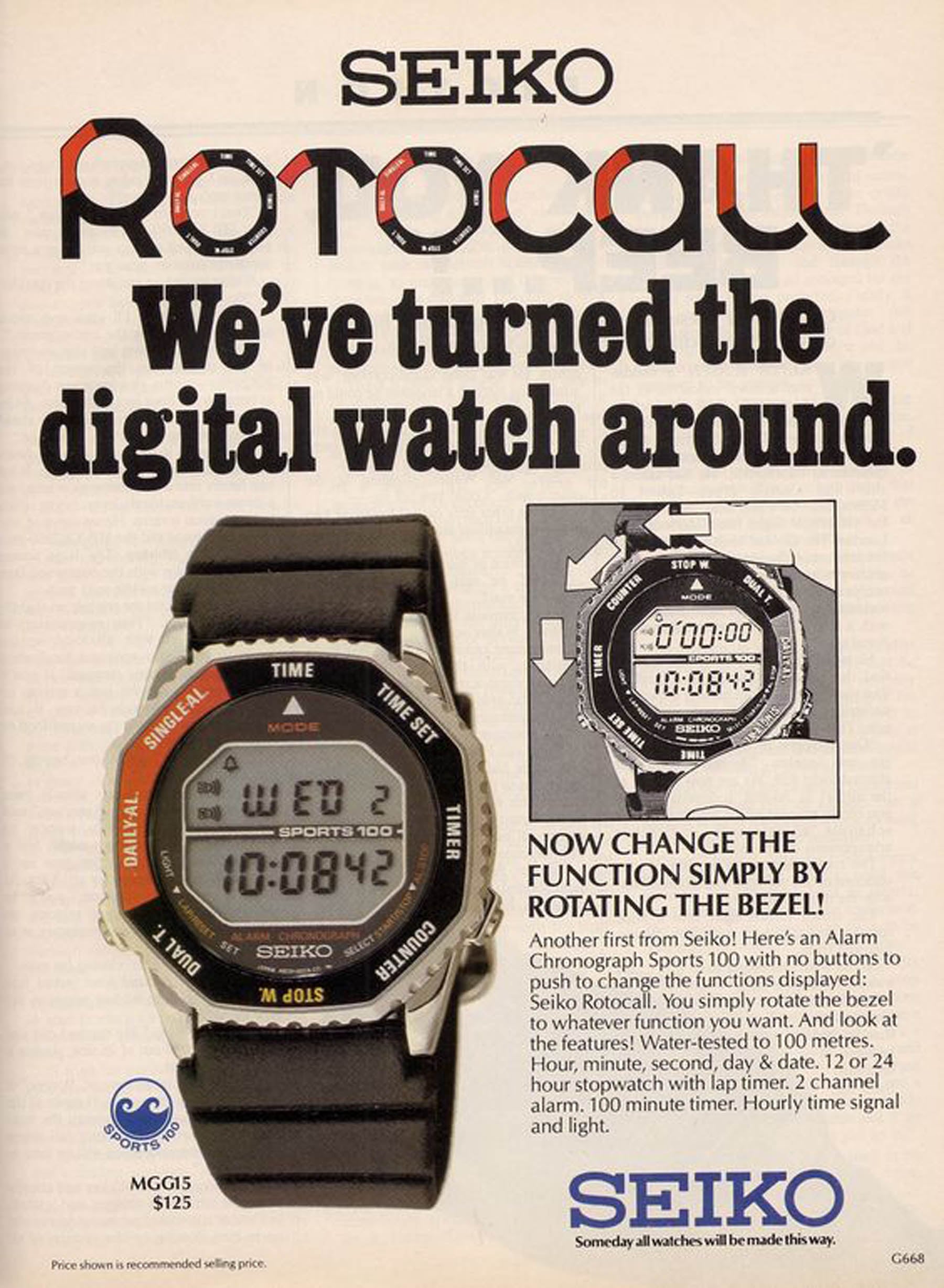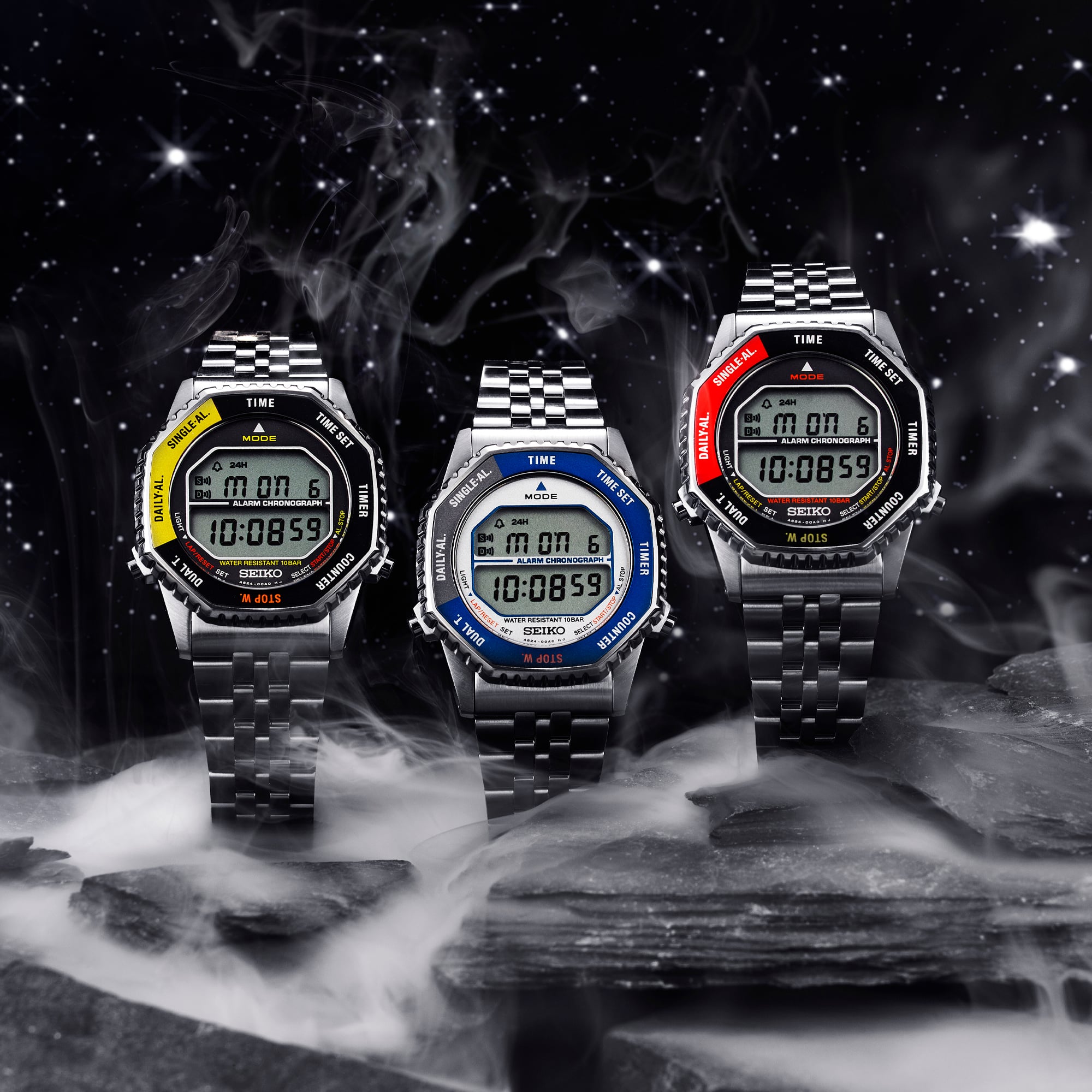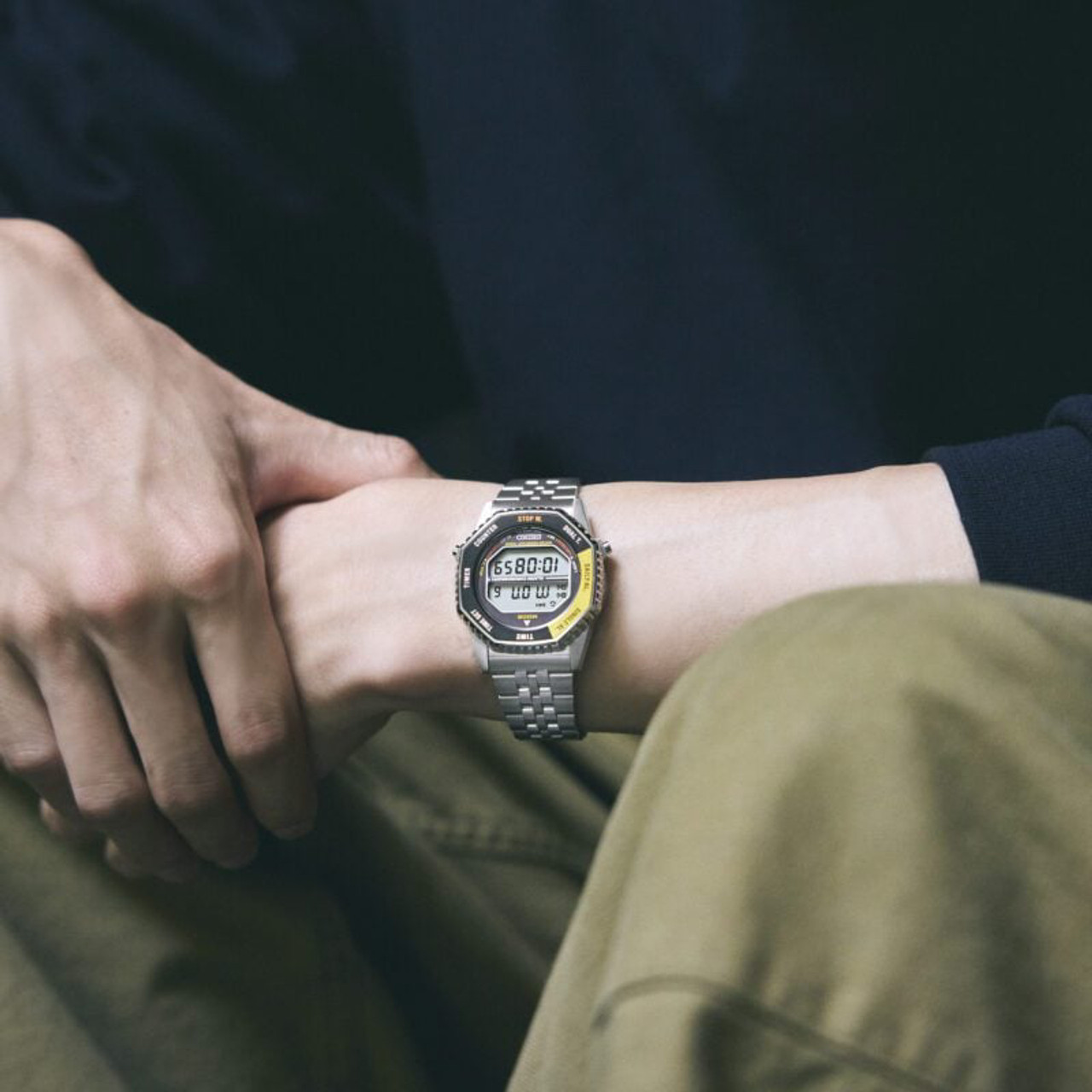When Seiko revives a design, it’s rarely casual. But the return of the Digital Quartz “Rotocall” — a cult 1980s model once worn in space — feels like something special. Fans of Seiko’s golden quartz era have waited decades for this comeback, and the result doesn’t disappoint. The Rotocall is back with its rotating bezel, its sharp digital display, and every ounce of its space-age charm intact.

The first Rotocall, the Seiko A829-6029, launched in 1982, during the height of Seiko’s quartz innovation. Its defining feature was a rotating bezel used to select digital modes — time, stopwatch, timer, alarms, dual time — instead of cycling through tiny pushers. The name “Rotocall” came from this rotary “call-up” of functions, an interface far ahead of its time.
That ingenuity wasn’t just aesthetic. Astronaut Bob Overmyer wore the A829 on the STS-5 Space Shuttle mission, and others followed. The bezel could be turned easily even with gloves on — a simple, practical brilliance that made it genuinely spaceworthy. Rated to 100 metres and built in steel, the Rotocall embodied Seiko’s early mastery of digital watchmaking.

Now, over 40 years later, Seiko has brought it back. The 2025 Rotocall arrives in three stainless-steel variants — SMGG17, SMGG19, and SMGG21 — each a near-identical recreation of the original.
The new 37 mm case and 10.6 mm thickness preserve the compact, tool-like proportions of the 1980s version. Finishing is clean and tactile: brushed surfaces, crisp edges, and that signature octagonal bezel that still “clicks” through modes with satisfying precision.

Inside beats the Seiko A824 quartz module, accurate to ±15 seconds per month. It keeps all the original’s functions — dual time, timer, stopwatch, counter, and multiple alarms — without any modern clutter. No Bluetooth, no solar charging, no gimmicks. Just quartz excellence, pure and simple.

Seiko sticks with Hardlex crystal for period authenticity, backed by 100 m water resistance. The steel bracelet has been subtly reworked for comfort, with a solid clasp and optional NATO strap in some markets. The retail price sits around £480 (UK) — a reasonable entry into Seiko’s digital heritage.
The new Rotocall wears like a time capsule. Its low profile hugs the wrist, the LCD digits are sharp and legible, and the rotating bezel remains the most intuitive digital interface ever designed. Every detail, from the typography to the “QUARTZ” badge, feels lovingly authentic.

Seiko could have modernised it with sapphire glass or solar power, but resisted the temptation. This is a faithful revival — not a reinvention. It embraces the quirks that made the original special, and that restraint is exactly why it works.
In today’s market, the Rotocall stands apart. Casio’s retro digitals evoke nostalgia, but none offer Seiko’s unique mechanical-digital hybrid interface. Even Seiko’s own Arnie reissue feels brawnier; the Rotocall is sleeker, more cerebral — a nod to the era when digital design still had imagination.
It’s not about tech specs or durability bragging rights. It’s about character — and Seiko’s new Rotocall has it in spades.
Movement: Seiko A824 Quartz
Functions: Time, Stopwatch, Timer, Dual Time, Alarm
Case: 37 mm stainless steel, 10.6 mm thick
Crystal: Hardlex mineral
Water Resistance: 100 m
Accuracy: ±15 s/month
Bracelet: Stainless steel, folding clasp
Price: £480 (UK RRP)